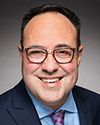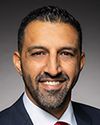Good morning.
Thank you, Mr. Chair, for your invitation to appear before you to discuss ways to reduce red tape at urban and rural Canadian airports. I'd like to begin by telling you a bit about business aviation and how our sector aligns with and supports the larger aviation community.
The Canadian Business Aviation Association was founded in 1961 and represents Canada's $12.1-billion business aviation sector. It has over 400 members across the country, including corporate flight departments, flight management companies and entrepreneurs who use over 1,100 aircraft to conduct and grow their businesses.
Given Canada's vast size, complex geography and small population, business aircraft have been a competitive advantage for many Canadian companies. These corporate aircraft move at the speed of business, allowing Canadian companies to compete on the world stage, while serving the local needs of their communities. I know this from personal experience. As a pilot for a major Canadian retailer, I flew personnel to locations in smaller Canadian communities like Yorkton, Saskatchewan, Campbell River, B.C., Summerside, P.E.I.; and all the places in between. Flying commercially would have added hours and, most often, days to our itinerary.
COVID-19 has forced more travellers to reconsider how they go about their business. The litmus test for these time-cost benefit exercises revolve around three key themes: customer experience, access and price.
In fact, recent studies and media reports have confirmed what we already suspected, which is that Canadian businesses are increasingly looking to business aviation, whether as charters, fractional or full ownership, as a permanent part of their travel needs. Because business aviation is becoming even more embedded in Canadian transportation, efficiencies at the airports and the integrity of the entire aviation system is of paramount importance.
I recently published an article in The Hill Times stating that Canada requires a whole-of-industry, strategic aviation policy focusing on six key areas. These are the role that governments play, our airports, the airlines, all air operators, air navigation service providers, and manufacturing and maintenance. It is within this context that I would like to address cost and red tape at airports.
As you know, airports are an essential part of a community's well-being. Not only do they enable passenger and cargo flights, but they also deploy services such as medevac, organ donations, police services, military search and rescue, firefighting and other lifesaving activities.
COVID-19 exposed a fundamental weakness of our air user-pay system: It only works if there are revenue streams. With demand down by over 90% for the better part of two years, every partner in the airport ecosystem—including the airports themselves, Nav Canada, CBSA and CATSA—is struggling to rebuild capacity. Rural and urban communities face increased pressure for service restoration, because of the aircraft upgauging decisions taken by the airlines.
We have a long way to go before we really recover. For example, it may surprise you to learn that not all CBSA airport stations are open. Since we are only a few weeks away from peak summer holiday travel, this can and will have negative implications for local tourism and trade. After two years of painful shutdowns, we cannot afford to lose even one room night for anyone who wants to travel to and within Canada.
International business aircraft arrivals are handled differently from commercial, but are even more problematic. Business and charter flights are processed through the telephone reporting centre, known as the TRC. Our members are reporting system-wide difficulties of reaching anyone through TRC, causing delays that stretch into hours. Combined with the delays we are seeing at some of the international arrival halls at airports, CBSA has to move quickly or we risk harming Canada's international reputation as a place to do business.
Another issue affecting the entire sector is downloading yesterday's costs on today's passengers. For example, New Brunswick did not have a single airport opened for international arrivals, even as Canada began to open other destinations, such as Ottawa. Now, those New Brunswick airports, like others in Canada, are scrambling to make up lost revenue and repay COVID-related debts.
Even with the welcome government programs, such as the airport relief fund, the regional air transportation initiative and the increased funding of the airports capital assistance program, the greatest burden of cost recovery is still falling to the current airport users, including the business aviation community, which is still trying to recover.
Getting rid of red tape and unnecessary and outdated regulations would free up limited resources, reduce costs and allow us to move forward. I look forward to finding ways to make that happen.
Thanks again for the opportunity to appear before you. I welcome your questions.










